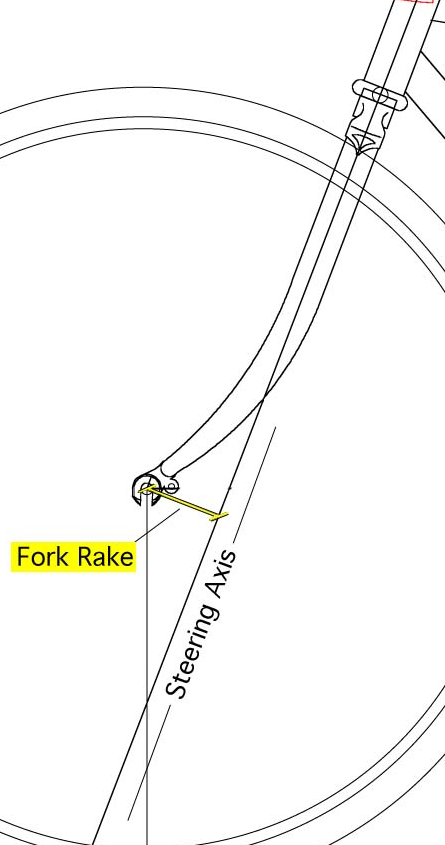Originally Posted by
JohnDThompson
IIRC, it was Colnago's marketing department that promoted straight-blade forks in the late 80s to early-90s. I suspect it was done mostly to eliminate a manufacturing step (raking the fork blades) and thereby sightly reduce the cost of production, more than anything else. ....
Originally Posted by
steelbikeguy
...The difference between a straight fork and a raked fork is nearly zero. The one significant difference is that the raked fork will be longer, and if all else is identical, it will be more flexible....
As was explained above, both straight and curved forks are
raked.
Rake has nothing to do with the shape of the blades. It has to do with the measured difference between a straight line down from the steer tube and where the axle is (diagram explains better than my words). As was also explained above, the curved fork achieves
rake from the curve. The straight fork achieves
rake from the steer tube being at an angle.
Rake is usually something like 40-50 mm regardless of whether the fork is curved or straight.
Straight leg fork
rake:

Curved fork
rake:
